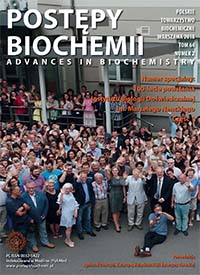Somatostatin receptors in the brain
DOI:
https://doi.org/10.18388/pb.2018_133Abstract
Somatostatin is a peptide that participates in numerous biochemical and signaling pathways. It functions via receptors (SSTRs1-5), which belong to the family of receptors coupled with protein G. All somatostatin receptors are characterized by a certain degree of homology in molecular structure. The cell effects of their agonists in peripheral tissues rely mainly on the inhibition of the hormones release. Somatostatin is also an important neuromodulator and neurotransmitter. SSTRs may affect other receptors, forming structural and functional homodimers and heterodimers. SSTRs play also role in the regulation of physiological processes, such as itching and pain, reproductive functions, regulation of feeding or mood. Besides physiological functions, SSTRs contribute also to the pathogenesis of glial tumors, neurodegenerative diseases, or post hemorrhagic stroke changes. Recent years of research have provided new data regarding the role of somatostatin receptor signaling pathways in the brain and the knowledge in this field is developing rapidly.
Downloads
Published
Issue
Section
License
All journal contents are distributed under the Creative Commons Attribution-ShareAlike 4.0 International (CC BY-SA 4.0) license. Everybody may use the content following terms: Attribution — You must give appropriate credit, provide a link to the license, and indicate if changes were made, ShareAlike — If you remix, transform, or build upon the material, you must distribute your contributions under the same license as the original. There are no additional restrictions — You may not apply legal terms or technological measures that legally restrict others from doing anything the license permits.
Copyright for all published papers © stays with the authors.
Copyright for the journal: © Polish Biochemical Society.




